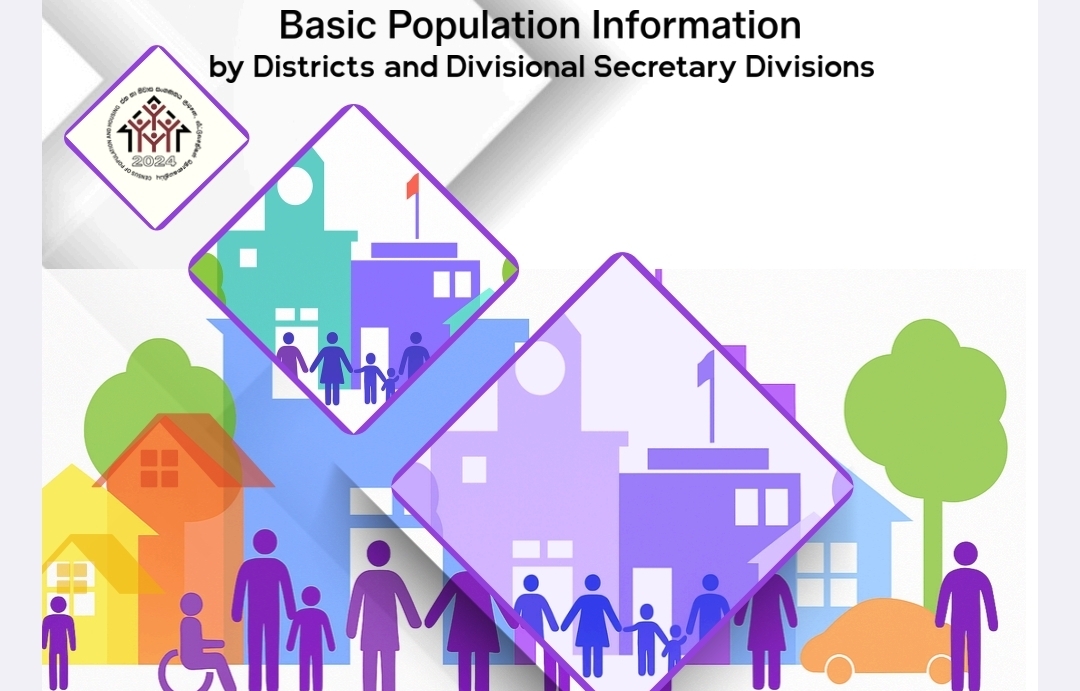
- The 15th census in the series of population censuses conducted in Sri Lanka, the ” Census of Population and Housing – 2024,” was carried out from 7th of October to the second week of February 2025.
- The starting hour of the 19th December 2024, i.e. 2024.12.19, 00:00 hours, was designated as the “Census Moment” of this census.
- As in the 2012 census, the enumeration of persons was carried out according to their placeof usual residence, i.e., according to the de jure method
- In this census, the total population of Sri Lanka was reported as 21,781,800. Of this population, 51.7 percent were females and 48.3 percent were males.
- In the urban sector, 51.9 percent of the population are females, while 48.1 percent are males. In the rural and estate rural sectors, the percentages of females are 51.7 percent and 51.4 percent, and the percentages of males are 48.3 percent and 48.6 percent respectively. In the estate urban sector, the percentages of females and males are reported as 50.4 percent and 49.6 percent respectively.
- The sex ratio in Sri Lanka is 93.3. All districts show sex ratio below hundred. The highest sex ratio is reported from Monaragala district (97.9), while the lowest sex ratio in the country is recorded in Batticaloa district (88.0).
- The population under 15 years of age in the country decreased by 4.5 percentage units, from 25.2 percent to 20.7 percent, during the census period from 2012 to 2024. Further, the population aged 65 and above increased from 7.9 percent to 12.6 percent, and shows an increase of 4.7 percentage points during this period.
- In 2024, the population aged 15-64 for 66.7 percent of the total population, compared to 66.9 percent in 2012. Accordingly, the percentage of the population aged 15–64 showed a decrease of 0.2 percentage points during the census period from 2012 to 2024.
- The population under the age of fifteen and those aged sixty five and above are considered dependents. The dependency ratio, which was calculated as 49.4 percent according to the 2012 census, has increased to 49.8 percent in 2024.
- The highest dependency ratio is reported in the Matara district of the Southern Province (55.0 percent), while the lowest dependency ratio is reported in the Colombo district of the Western Province (43.0 percent).
- In the census, individuals declare their ethnicity. Accordingly, 74.1 percent of Sri Lanka’s total population, roughly three out of four people, are Sinhalese; 12.3 percent are Sri Lankan Tamils; 10.5 percent are Sri Lankan Moors/Muslims; 2.8 percent are Indian Tamils/ Malaiyaha Thamilar. The remaining 0.3 percent belongs to other ethnic groups such as Burgher, Malay, Sri Lankan Chetty, Bharatha, and Veddah.
- Census reports the religion of the individuals as how they declare. Of the total population, 69.8 percent are Buddhists; 12.6 percent Hindus; 10.7 percent Muslims (Islam); 5.6 percent Roman Catholics; and 1.3 percent other Christians. The rest do not belong to these religions and that percentage is a small value of 0.02 percent.
- The total migrant population reported in the census was 3,167,263. Among the migrant population 40.6 percent were migrated primarily due to marriage.
